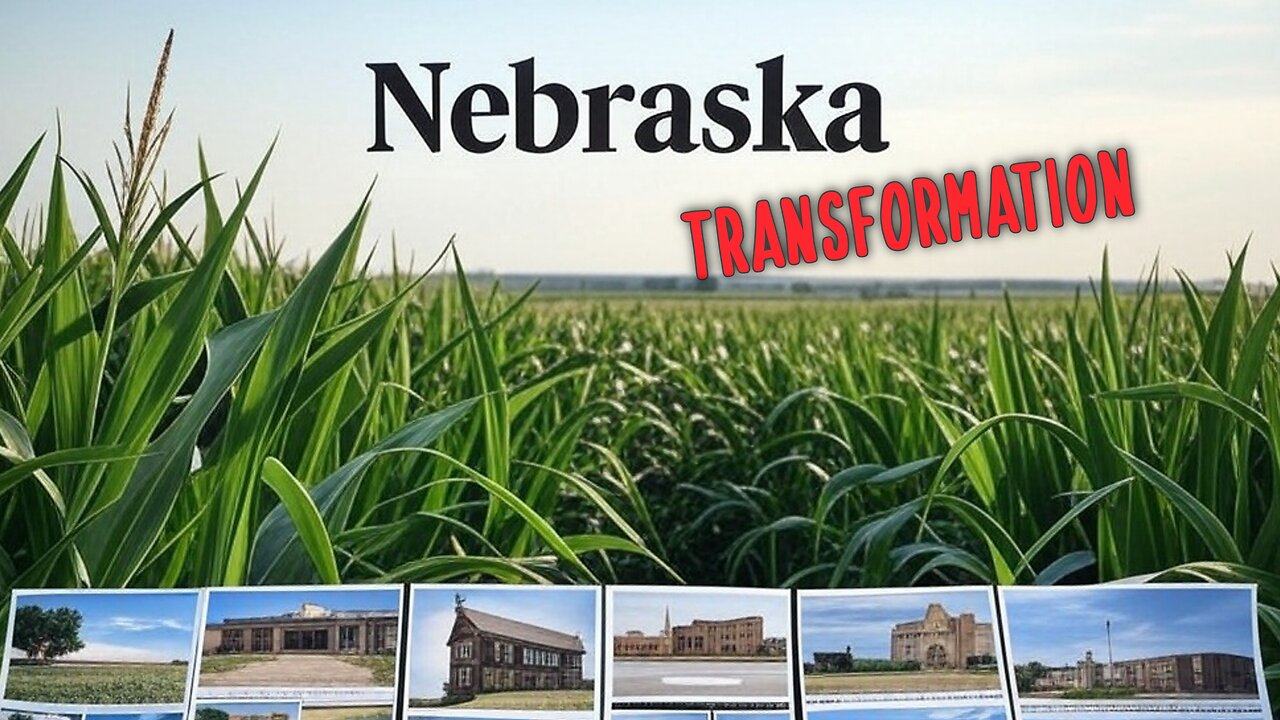Premium Only Content

The Start of Hispanic Migration (Part 1): Nebraska Transformation through Migration and Meatpacking
Hispanic roots in Nebraska stretch back centuries, beginning with Spanish explorers like Pedro de Villasur who ventured north in 1720. However, the meaningful migration that reshaped the state started later, in the mid-19th century. When Nebraska became a state in 1867, a small group—perhaps 50 to 100 Mexicans—worked railroads and cattle trails, vastly outnumbered by over 50,000 White settlers. These early arrivals laid a quiet foundation, but the real surge came in 1969 when Iowa Beef Packers opened its Dakota City plant. Facing a union strike, the company hired Mexican workers, many undocumented, under Governor Norbert Tiemann’s watch, establishing a reliance on cheap labor that set the stage for decades of growth.
This pattern took hold and spread rapidly. By 1990, Iowa Beef Packers launched another plant in Lexington, drawing hundreds more workers and transforming the town into a Hispanic hub within a decade. State leaders offered no resistance, allowing the population to climb from 6,000 in 1967 to over 94,000 by 2000. The pull of agriculture—meatpacking and crop production—drove this expansion, offering steady jobs at wages far below union standards. Across the nation, industries mirrored this approach, tapping into a growing pool of workers willing to take on grueling tasks for less pay, a trend that fueled demographic shifts from coast to coast.
Nebraska’s governors, from Tiemann to those in the late 20th century, stood by as this workforce grew, planting seeds for a broader overhaul. The state’s agricultural might, generating billions annually, became the magnet that pulled families north with promises of work and stability. This unchecked migration wasn’t just a local phenomenon—it reflected a national wave where economic needs reshaped entire regions, setting Nebraska on a path where Hispanics became a permanent fixture, altering its identity step by step.
50-Word Summary
Hispanic roots in Nebraska trace back to Spanish explorers like Pedro de Villasur in 1720, but significant migration began in 1867 with railroad workers. The 1969 Dakota City plant opening sparked a surge, fueled by meatpacking and agriculture. By 2000, Nebraska’s Hispanic population hit 94,000, reshaping the state. Read the full story at the Nebraska Journal Herald
Read the full article at the Nebraska Journal Herald
#HispanicNebraska #SpanishExplorers #MeatpackingMigration #NebraskaHistory #LaborLegacy
-
 14:41
14:41
Nate The Lawyer
1 day ago $0.21 earnedWhy Hasn’t Raja Jackson Been Arrested Yet?
42613 -
 6:04
6:04
Buddy Brown
2 days ago $0.41 earnedEugene’s SICK Newspaper Cover is a WARNING to Us All! | Buddy Brown
6038 -
 16:23
16:23
Actual Justice Warrior
1 day agoMom Sucker Punched By Repeat Offender In Chicago
3.21K25 -
 56:28
56:28
Professor Nez
1 day ago🚨Not Only is Epstein NOT Going Away… It Just Got Worse!
19.9K23 -
 8:09
8:09
MattMorseTV
16 hours ago $9.43 earnedTrump scores 17th CONSECUTIVE Supreme Court VICTORY.
71.3K58 -
 2:11:25
2:11:25
Side Scrollers Podcast
18 hours agoUK JAILS TV WRITER FOR WRONG THINK + TWITCH ALLOWS CYBERSTALKING + MORE | SIDE SCROLLERS LIVE
30.5K8 -
 10:47
10:47
Nikko Ortiz
1 day agoThese Tik Tok Clips Are Extremely Painful...
51K7 -
 13:43
13:43
GritsGG
14 hours agoI Made a Brand New Warzone Account! Will I Get Bot Lobbies?
8.8K1 -
 1:09:23
1:09:23
The HotSeat
14 hours agoTrump’s Parade = Mocked, China’s Parade = Praised: Leftist Hypocrisy EXPOSED
35K33 -
 LIVE
LIVE
Lofi Girl
2 years agoSynthwave Radio 🌌 - beats to chill/game to
211 watching